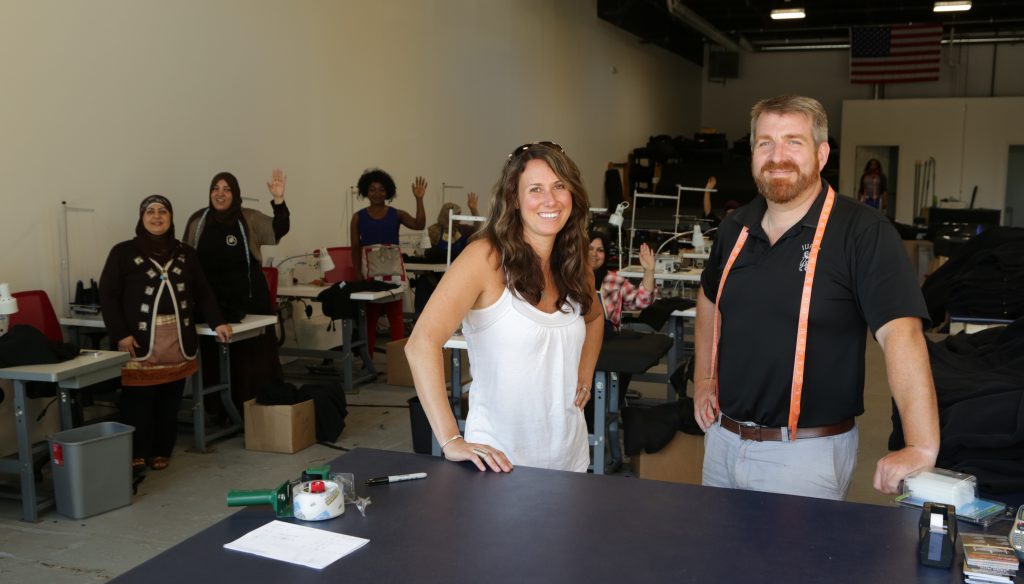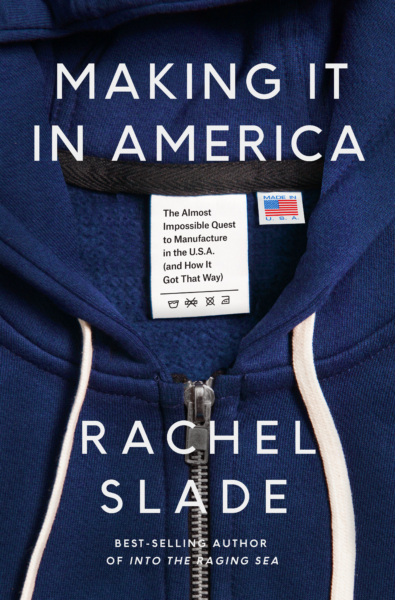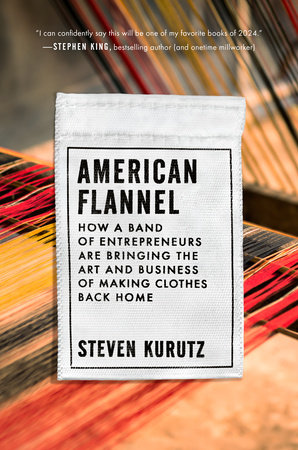
One is out on Tuesday, and the other launches in March. Both are worth adding to your reading list.
Do you remember way back in 1997, when Dante’s Peak and Volcano, two Hollywood blockbusters about volcanic eruptions, premiered within weeks of each other?
Or think back to 2006, when two movies about magicians — the Christopher Nolan-directed The Prestige and the Edward Norton-starring The Illusionist — also came out within weeks of one another?
Such pairings of similar-yet-different media are rare, but they happen from time to time. One is about to happen again, this time in the literary world, with both telling the story of American apparel manufacturers.

The first is a new nonfiction book, Making It In America: The Almost Impossible Quest to Manufacturer in the U.S.A. (And How It Got That Way), which officially releases on Tuesday. Written by journalist Rachel Slade, the book examines the history of manufacturing in the United States, including its decline in the 20th century, and charts a course for how to get things back on track. The book promises not to be a wonky tome, however. Slade weaves the personal story of Ben and Whitney Waxman, who launched union-represented clothing manufacturer American Roots from scratch in Maine, throughout the book, which promises to leave readers feeling “invigorated.”
Slade previewed the book last week in an opinion piece for The New York Times, writing that she “inherited my father’s ‘made in the U.S.A.’ credo, obsessively hunting for labels, flipping over plates and chairs and turning clothes inside out to find a country of origin.” But as she spent time with the Waxmans, she began to understand that what they “are doing is almost impossible. The deck is stacked against them. Every day is a struggle.”
Slade thinks good policy is the answer:
“…we also need to talk about formulating a new industrial policy, just as Alexander Hamilton and George Washington did at the moment of the country’s founding. A manufacturing-first agenda, one not just focused on green energy production and chip manufacturing, would funnel government resources toward policies that manufacturers need to remain robust. That includes job-training programs, transportation infrastructure, research and development funding, sectorwide coordination and financing support in every industry. The policy would also take a hard look at tariffs and intellectual property laws to protect American innovation, and encompass broad, clear guidelines for collective bargaining and environmental standards.”
I’m excited to read more about American Roots in the book, as we first started following the company in way back in 2016, and have included them in our annual holiday gift guide on multiple occasions, including our most recent addition. Anything that brings added attention to a deserving Made in America brand (and one that’s represented by the United Steelworkers union) is good news.
But I’m also looking forward to reading Slade’s take on the policy needed to help companies like American Roots succeed. As we at the Alliance for American Manufacturing (AAM) have argued since our founding, the decline of U.S. manufacturing over the past several decades wasn’t a fluke; it happened because of a series of bad policy choices. Good policy is the only way back.

The second book centered on manufacturing also spotlights American apparel makers. This one is titled American Flannel: How a Band of Entrepreneurs are Bringing the Art and Business of Making Clothes Back Home. Written by Steven Kurutz, this one profiles sock maker Zkano and apparel brand American Giant, two companies AAM also knows pretty well. Like American Roots, both have been included in our holiday gift guide several times.
American Flannel isn’t set to release until March 12, but it’s already getting plenty of praise — including from bestselling author Stephen King, who said that he was “hooked from the very first page.”
“The story he tells is as important as it is absorbing,” King continued. “First, it’s an uplifting tale of good old American inventiveness and stick-to-it-iveness, the best kind of underdog story. It is also a cautionary tale about what happens when a country becomes so rich and complacent that it forgets how to create as well as buy. I can confidently say this will be one of my favorite books of 2024.”
With such a ringing endorsement from a literary legend, how can one not plan to read American Flannel? But let’s be honest, I’d read it anyway. I’m a big fan of both these companies — I’m wearing a pair of American Giant pants as I type this, and I bought several pairs of Zkano’s holiday socks this past December — so I am excited to learn more about how these companies are navigating the current manufacturing landscape. But as with Making It In America, I suspect that American Flannel will also weave in a bit about policy, including what’s needed to bring about a true manufacturing revival.
I’ve been working at AAM for nearly 10 years now, and when I first started things were pretty dire for American manufacturing. I could not have imagined that there would be multiple books releasing around the same time chronicling how multiple clothing companies have managed to make their product line in the United States, and one even by utilizing a union workforce.
The release of these two books truly shows how far we’ve come to strengthen manufacturing over the past decade. I hope their release can serve as a rallying cry that will help advance the good policy we need to grow American manufacturing even further.
While I have my own views on which of those Hollywood blockbusters came out on top — Volcano and The Prestige are the winners for me — I suspect that both Make It In America and American Flannel are worthwhile reads. They are on our reading list here at AAM, and we hope you’ll add them to yours.
